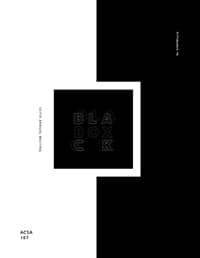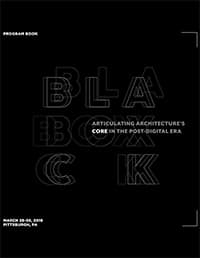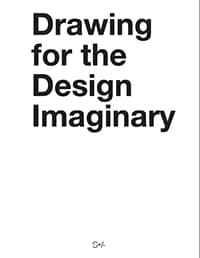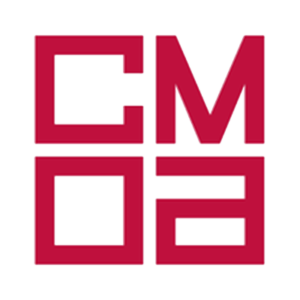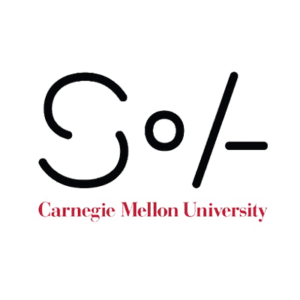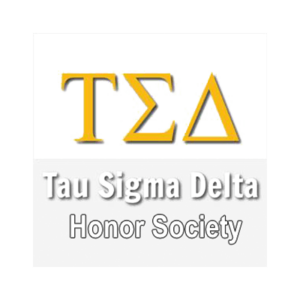
March 28-30, 2019 | Pittsburgh, PA
107th Annual Meeting
BLACK BOX: Articulating Architecture’s Core in the Post-Digital Era
Host School
Carnegie Mellon University
Conference Co-chairs
Jeremy Ficca, Carnegie Mellon University
Amy Kulper, Rhode Island School of Design
Grace La, Harvard University
Conference Overview
In his final essay, written while on life-support and published posthumously, the prolific architectural critic, Reyner Banham, attempted to draw a distinction between architecture and other modes of design. Banham’s essay likened the discipline of architecture to a black box – a device known only through its inputs and outputs, but never through its content. The elusive and absolute quality of architecture that Banham wanted to articulate resided, for him, in the how rather than the what, in the performance of architecture rather than its meaning. For Banham, the trope of the black box alludes to an absolute quality of architecture, a disciplinary core, but one senses in the unfolding of his argument, a similar dilemma to the one Chief Justice Stewart Potter encountered in his refusal to define pornography, and his defiant claim that he knows it when he sees it. In the nearly thirty years since the essay’s publication, we find ourselves in a post digital world in which architecture has continued to broaden its arsenal of techniques and operate across an increasingly expanded field. The driving questions for this conference are: Has this unprecedented proliferation and migration distanced architecture from its disciplinary core or helped to transform and reinstate it? And what impact do these radical transformations in architecture’s cultural production have on the discipline?
If Banham’s ruminations migrate towards architecture’s core, then at the opposite extreme Jane Rendell, architect and critic, conceptualizes architecture as a subject encompassing a number of disciplinary approaches. Contemporary architectural education reflects this breadth, encompassing nearly as many approaches and methods as there are educators. Given this exceptional diversity, the conference asks a deceptively simple question: What constitutes the core education of an architect? This question is complicated by synthetic curricular approaches that foreground the imbrications of design, technology and history/theory, promiscuously appropriating techniques across these distinctive epistemologies.
We seek session proposals that articulate architecture’s core: its curricular core, its core assertions, and its core techniques. This is neither a nostalgic, arrière-garde return, nor a critique of avant-garde disciplinary diversity, but rather a genuine questioning and probing of the vanguard in order to determine what currently matters to the education of an architect. If, following Rendell’s lead, we define architecture as a subject containing a number of disciplinary approaches, then this conference will focus on method, research and practice – categories of operation that specifically eschew content, but allow us to nevertheless glimpse inside Banham’s elusive black box. We welcome proposals that interrogate these categories, considering both their disciplinary bounds and the ongoing proliferation of promiscuous hybrids.
Methods
In the category of method, we seek sessions that address methodological intersections and their consequences for architecture.
- Does the current myriad of architectural methodologies contribute to a clearer understanding of the core tenants of architecture?
- Or are they a distraction to the design process?
Research
In the territory of research, we invite sessions that explore how design research protocols are distinguished from established models of inquiry in the sciences and humanities.
- How does research access and articulate architecture’s disciplinary core while contributing to its evolution?
Practice
In the arena of creative practice, we seek sessions that examine modes of design practice emerging from this specific moment of cultural production.
- If disciplines are regimes of practice, then cumulatively, how do these diverse and innumerable architectural approaches constitute a disciplinary core?
Banham and Rendell’s essays bracket the conundrum facing the academy in the post-digital era, and foreground a series of conversations about cultural production today. We seek a dynamic dialogue on the existence and relevancy of core knowledge in the current education and practice of architecture.
Conference Location
Ideally situated steps from the endless array of things to do in downtown Pittsburgh, the Westin Pittsburgh hotel is well-placed to explore the Steel City. Pittsburgh is a city in western Pennsylvania at the junction of 3 rivers. Its Gilded Age sites, including the Carnegie Museum of Natural History, the Carnegie Museum of Art and the Phipps Conservatory and Botanical Gardens, speak to its history as an early-20th-century industrial capital. In the North Shore neighborhood are the modern Andy Warhol Museum, Heinz Field football stadium and PNC Park baseball stadium.

Keynote Speakers

Peggy Deamer
Peggy Deamer is the founding member and the Content Coordinator of the Architecture Lobby, a group advocating for the value of architectural design and labor. She is a retired Professor of Architecture at Yale University and principal in the firm of Deamer, Architects and before that, Deamer + Phillips, Architects. She received a BA from Oberlin in philosophy, a BArch from The Cooper Union and a Ph.D from Princeton University. She is the editor of Architecture and Capitalism: 1845 to the Present and The Architect as Worker: Immaterial Labor, the Creative Class, and the Politics of Design. She is co-editor of Building in the Future: Recasting Architectural Labor; BIM in Academia; and Re-Reading Perspecta. Articles by her have appeared in Log, Harvard Design Magazine, e-Flux, The Avery Review and numerous anthologies.
Antoine Picon
Antoine Picon is the G. Ware Travelstead Professor of the History of Architecture and Technology and Director of Research at the GSD. Trained as an engineer, architect, and historian, Picon works on the history of architectural and urban technologies from the eighteenth century to the present. He has published extensively on this subject. He is amongst others the author of French Architects and Engineers in the Age of Enlightenment(1988, English translation 1992), Claude Perrault(1613-1688) (1988), L’Invention de L’ingénieur moderne (1992), La Ville territoire des cyborgs(1998), Les Saint-Simoniens (2002), Digital Culture in Architectur(2010), Ornament: The Politics of Architecture and Subjectivity(2013), and Smart Cities: A Spatialised Intelligence(2015). He has edited many other volumes, in particular L’Art de l’Ingénieur(1997), and La Ville et la Guerre(1998).
Antoine Picon is also Chairman of the Foundation Le Corbusier, and a member of the French Academy of Architecture and the French Academy of Technology.

Toshiko Mori
The American Institute of Architects and the Association of Collegiate Schools of Architecture have named Toshiko Mori, FAIA, the 2019 winner of the AIA/ACSA Topaz Medallion for Excellence in Architectural Education, the highest honor given to educators in architecture.
Toshiko Mori, FAIA is the Robert P. Hubbard Professor in the Practice of Architecture at the Harvard University Graduate School of Design, where she was chair of the Department of Architecture from 2002 to 2008, and the principal of Toshiko Mori Architect PLLC.
Her firm’s recent work includes master plans for the Brooklyn Public Library Central Branch and the Buffalo Botanical Gardens; Thread, a cultural center and artists’ residences in Senegal; and Fass School and Teachers’ Residence in Senegal. Their design for the Brown University Watson Institute for International and Public Affairs opens this spring. Their projects have been internationally exhibited, including at the 2012, 2014 and 2018 Venice Architecture Biennales, the 2017 Chicago Architecture Biennial and the Louisiana Museum in Copenhagen. Architectural Digest listed her amongst their biennial AD100 in 2014, 2016, 2017, 2018, and 2019.
She regularly contributes to publications and has won numerous awards including the Academy Award in Architecture, from the American Academy of Arts and Letters; the AIA New York Chapter Medal of Honor; the 2016 ACSA Tau Sigma Delta National Honor Society Gold Medal; and is a fellow of the American Academy of Arts & Sciences. Her projects have won awards from Architizer, The Plan and AIA. Recently, Thread was included in TIME Magazine’s 100 Greatest Places in the World. She recently received the 2018 Maine in America Award and the LongHouse Reserve’s LongHouse Award, and will receive the OMI Arts Leadership Award in 2019.
She is a member of the World Economic Forum’s Global Future Council on Cities and Urbanization. She will be the keynote speaker at the upcoming AN Facades+ Symposium in New York and at the Dassault Systemes Worldwide Conference for Sustainable Innovation at the 2019 Milan Design Week.
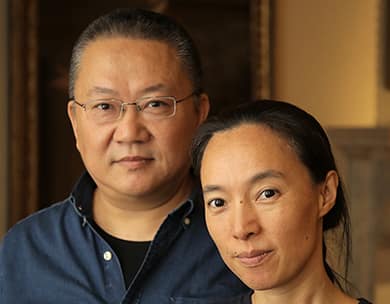
Wang Shu & Lu Wenyu
Wang Shu & Lu Wenyu are the Tau Sigma Delta (TSD) Honor Society in Architecture and Allied Arts 2019 TSD Gold Medal.
Wang Shu & Lu Wenyu founded the Amateur Architecture Studio in 1998. This Hangzhou-based practice has grown during the past eight years into a famous name in China. The Amateur Architecture Studio’s best-known projects are the Wenzheng Library in Suzhou University, the Harbor Art Museum in Ningbo and the Xiangshan Campus of the China Academy of Art in Hangzhou.
The Amateur Architecture Studio was engaged in experimental research projects, for example Sanhe House in the China International Practical Exhibition of Architecture in Nanjing, the Ceramic Tea House in Jinhua Architecture Park in Jinghua. The projects have been shown in international exhibitions from 2001 including “TU MU-Young Architecture of China” in AEDES Gallery, Berlin (Germany), Shanghai Biennale 2002 at the Shanghai Art Museum in Shanghai, (China), Alors, La Chine?, Centre Pompidou in Paris (France), Synthi-Scapes: Chinese Pavilion of the 50th Venice Biennale in the Guangdong Museum of Art, Guangzhou (China) and in the Art Museum of the Central Academy, Beijing (China). The projects have been published in China and abroad.
Closing keynote and reception is in partnership with the Carnegie Museum of Art’s, Heinz Architectural Center and the Carnegie Mellon University, School of Architecture.
Downloads
Allison Smith
Programs Manager
202-785-2324
asmith@acsa-arch.org
Eric W. Ellis
Senior Director of Operations and Programs
202-785-2324
eellis@acsa-arch.org

 Study Architecture
Study Architecture  ProPEL
ProPEL 